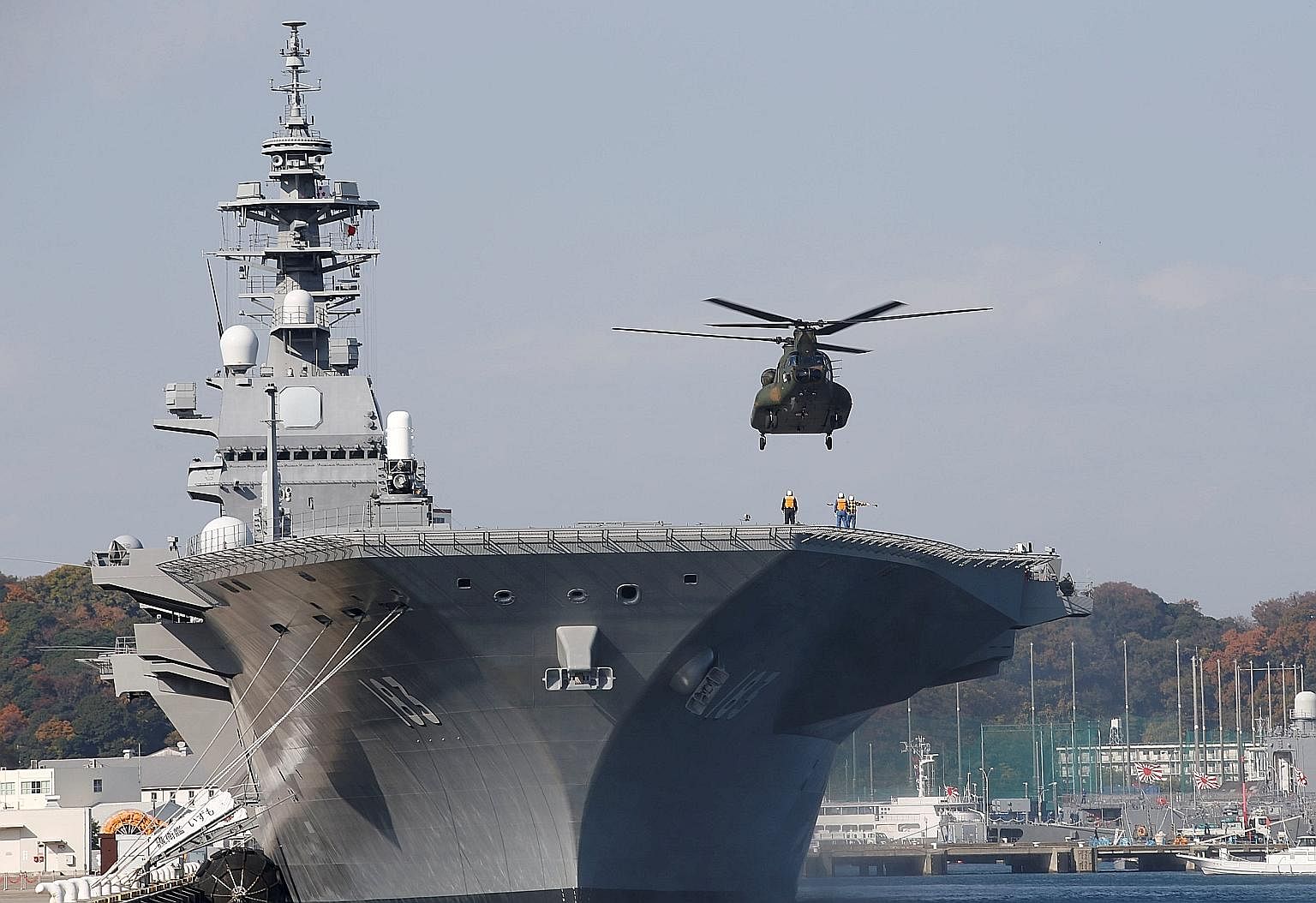Japan will deploy its largest warship, the Izumo, through the South China Sea to the Indian Ocean in May and put its sister ship, Kaga, into service last week in what analysts say amounts to a show of force against Beijing's militarisation of a waterway through which US$5 trillion (S$6.98 trillion) passes every year. The moves also signal a shift in Tokyo's pacificist stance.
China, which claims almost the entire South China Sea, is "wrapping up" its construction of naval, air, radar and defence facilities on three of its artificial islands, a report said Monday.
This means China can deploy military assets to the waterway "at any time", and its air bases there "will allow military aircraft to operate over nearly the entire South China Sea", the US-based Asia Maritime Transparency Initiative of the Centre for Strategic and International Studies said, citing satellite images.
Japan has no claims in the South China Sea, but sees it in its interests to work with strategic allies in freedom of navigation operations to maintain open seas. However, it is embroiled in a separate dispute with Beijing in the East China Sea over the Senkakus or Diaoyus.
Tokyo has not commented on the Izumo deployment officially. But its three-month passage is expected to take it to ports like the Philippines and Singapore before it reaches the Indian Ocean for the annual joint Malabar Exercise with the US and India.

The Izumo helicopter destroyer is an anti-submarine warfare machine that can carry at least 14 helicopters, though its main role is surveillance and disaster relief missions. Ditto the Kaga, launched last week, which is armed with short-range self-defence systems, but can also carry 14 helicopters.
At the launch, Vice-Minister of Defence Takayuki Kobayashi said: "China is attempting to make changes in the South China Sea with bases and through acts that exert pressure is altering the status quo, raising security concerns among the international community."
Indeed, defence expert Tosh Minohara of Kobe University said: "Japan is gradually shedding its previous security identity and taking baby steps into dispensing with its pacifist status" that has encumbered military expansion since its defeat in World War II.
The moves "do not necessarily mean Japan is becoming war-like, but rather, a more rational and pragmatic power," he said. "We should not forget the fact that this is very much Japan's reaction to what China is doing."
Dr Minohara noted that beyond the South China Sea, China has likewise "upped its intensity of incursions not only into Japanese waters, but also into Japanese airspace" in the East China Sea, where Tokyo administers the Senkaku Islands.
Dr Alessio Patalano from the department of war studies at King's College London said Japan's presence in the South China Sea is not new given its capacity building activities, but the deployment of its largest warship marks a shift in naval diplomacy. "If continued, it will send a positive signal to both strategic partners including the Australia and US of its willingness to take on a greater role, while also serving as a show of force to China."
Dr Masashi Nishihara, who heads the Research Institute for Peace and Security in Tokyo, said: "Japan is sending the ship through the South China Sea - which is not the same as sending the ship there for the purposes of military drills."

